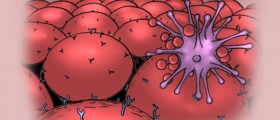
Given the nature of the phenomenon, many therapists and psychologists point out that it is not at all that easy to make a clear cut distinction between the treatment approaches, since there exist so little of those who use only one approach. Therefore, each of the therapists, in a way, creates his/her own treatment approaches, which are later on, used as standard. The majority of therapists considered this kind of approach to be the most effective and fruitful one, especially when dealing with the symptoms of this condition. As for the ultimate healing of a person in question, interpersonal approach has proved to be the most result yielding.
Helpful Treatment Approach
For an approach to be effective, it is essential to give it a specific organization. What should be kept in mind is that, though there exist specific phases, they are prone to modification and are flexible, so a therapist can adapt them to the patient even on the go. But the most important thing, without which none of he therapies would be even remotely effective, is the patient’s desire and motivation to undergo such a treatment.
Analyzing phase. During this phase, an in depth assessment of the patient is done with the aim of determining the possible existence of some additional conditions (primarily psychological in nature). What is often discovered in the person in question is the presence of narcissism, anxiety, hysteria and to a certain degree depression. The next phase is reserved for a fairly intensive behavioral approach to the problem, and its main aim is to aid a patient in grasping better the present situation and discover the best possible ways of organizing and stabilizing his/her life. Crucial in this phase are setting firm grounds for control, feeling of success and establishing stability. One of the vital phases has the main focus to break off the homosexual patterns, which are the main initiators of a person’s arousal tendencies. This is the phase of treatment in which the patient is encouraged to further investigate, interfere with, and in the end, to bring the homosexual arousing to a stop. The last phase presents a combination of more than one therapy approach. The approaches mentioned so far are used according to the patient’s needs. What is explored and concentrated on in this particular phase are issues a patient has with self-confidence, intimacy, self-image and love, worth, defensive isolation, guilt, shame and loneliness, feeling of alienation and masculinity.
















Your thoughts on this
Loading...